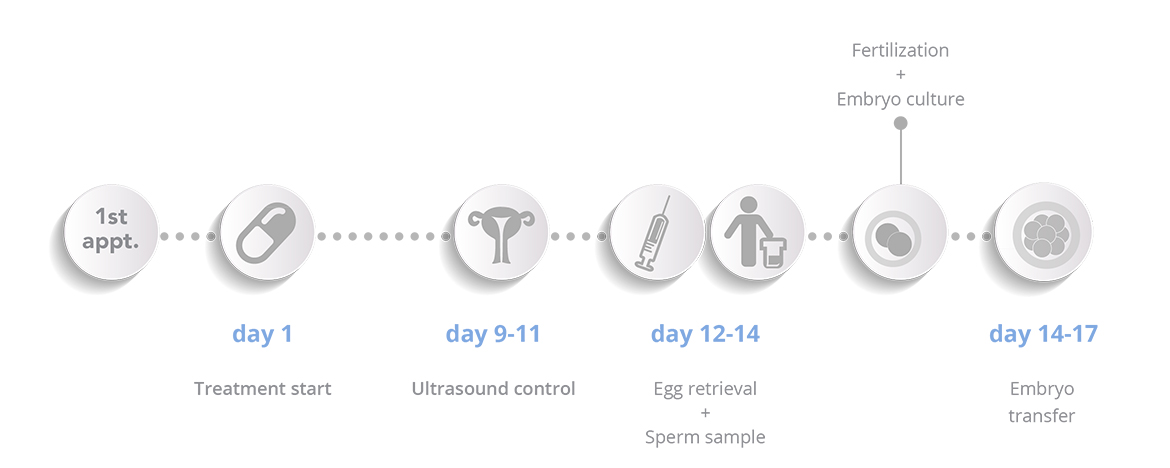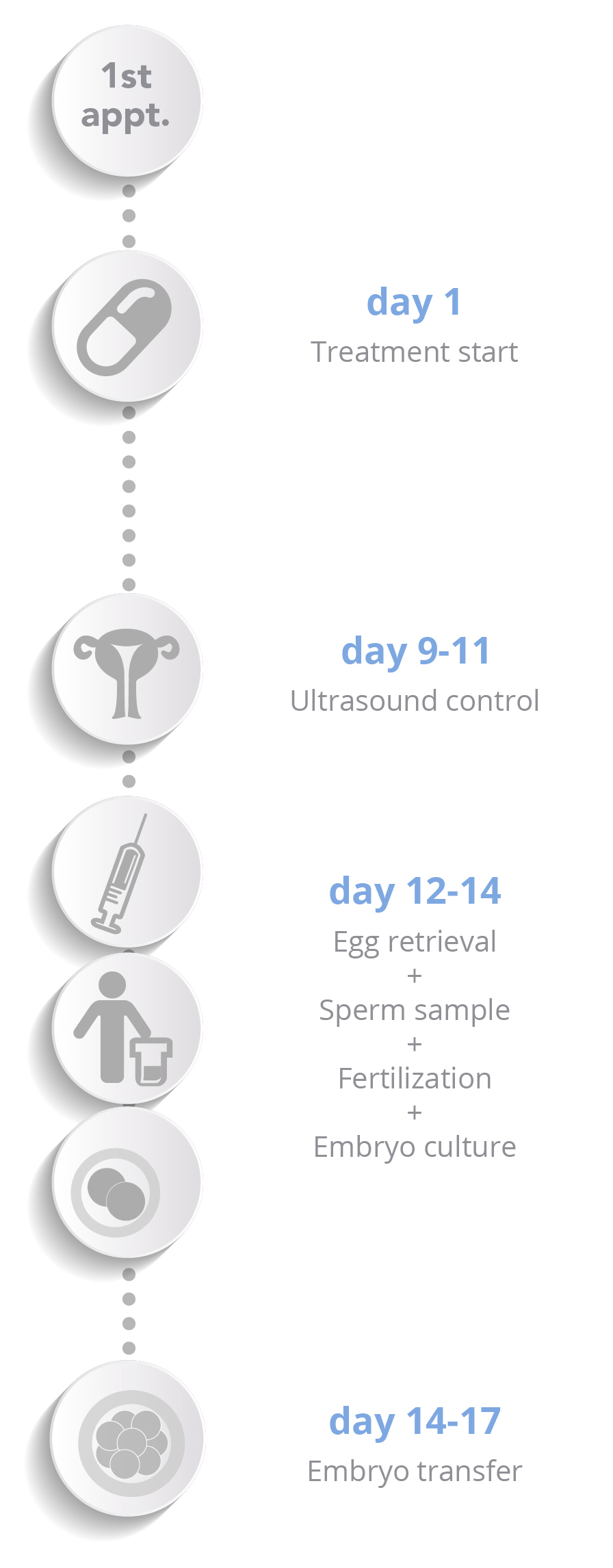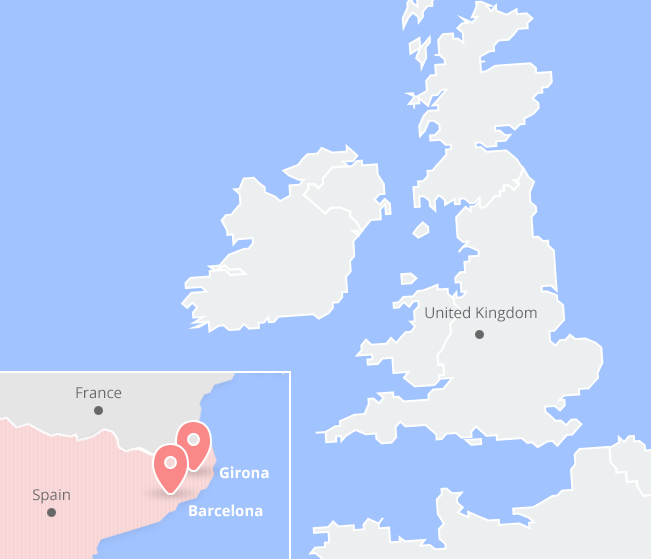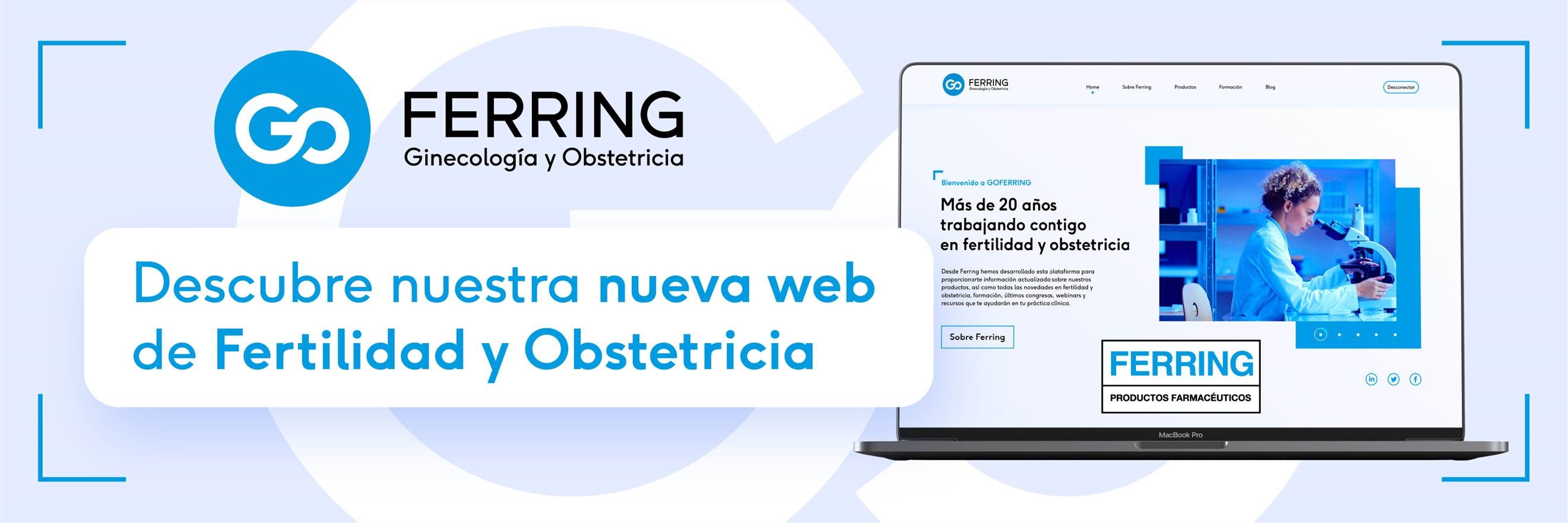Assisted reproduction techniques
In vitro fertilisation (IVF)
In vitro fertilisation involves the union of an egg with sperm in the laboratory. The resulting embryos are transferred to the uterus after being cultured for a few days.
Indications
In vitro fertilisation is indicated for couples with different causes for sterility: endometriosis, tubal blockage, male factors, failure of artificial insemination treatments, advanced age or sterility due to unknown causes.
In vitro fertilisation procedure
-
Ovarian stimulation with hormones
In vitro fertilisation begins by performing a hormone treatment so that the patient has ovarian hyperstimulation, monitored by ultrasound and hormonal determinations. Once ovarian stimulation is determined to be the most suitable, a follicular puncture is scheduled. This entire process lasts between 10 and 12 days.
-
Follicular puncture
It is a painless surgery procedure that is done under anaesthesia and lasts 15 minutes. Follicular liquid is obtained during this puncture, in which embryologists must identify the eggs that will later be used in in vitro fertilisation. On the same day as the puncture, the patient’s partner must provide a semen sample. This sample will be used for in vitro insemination of the eggs.
-
In vitro insemination of the eggs
It joins the oocytes and sperm and can be performed in two ways, depending on each case.
- In vitro fertilisation (IVF). It joins the obtained oocytes with an appropriate amount of sperm, so that they follow the natural course of fertilisation.
- ICSI or intracytoplasmic sperm injection. Sperm is inserted in each egg with a micromanipulator. Sperm can be obtained from ejaculate or from a testicular biopsy in the event that no sperm appeared in the ejaculate.
-
Embryo culture
The day after in vitro insemination of the eggs, fertilised eggs are identified, which are already called embryos. These embryos will be cultured in vitro in the laboratory so that they can begin their development (embryo division).
-
Embryo transfer
Between the second and third days after puncture, embryo transfer from the in vitro fertilisation cycle will be scheduled. It places 1 or 2 embryos inside the patient’s uterus through the vagina, with the help of an ultrasound. It is a short, painless procedure and does not need any type of anaesthesia.
-
Embryo vitrification
Embryos that are not placed inside the patient’s uterus on the day of embryo transfer are frozen. These frozen embryos can be used in the case that there is no pregnancy from this in vitro fertilisation fresh cycle, or when patients want a second pregnancy. Embryos are stored at the frozen embryo bank at GIREXX.
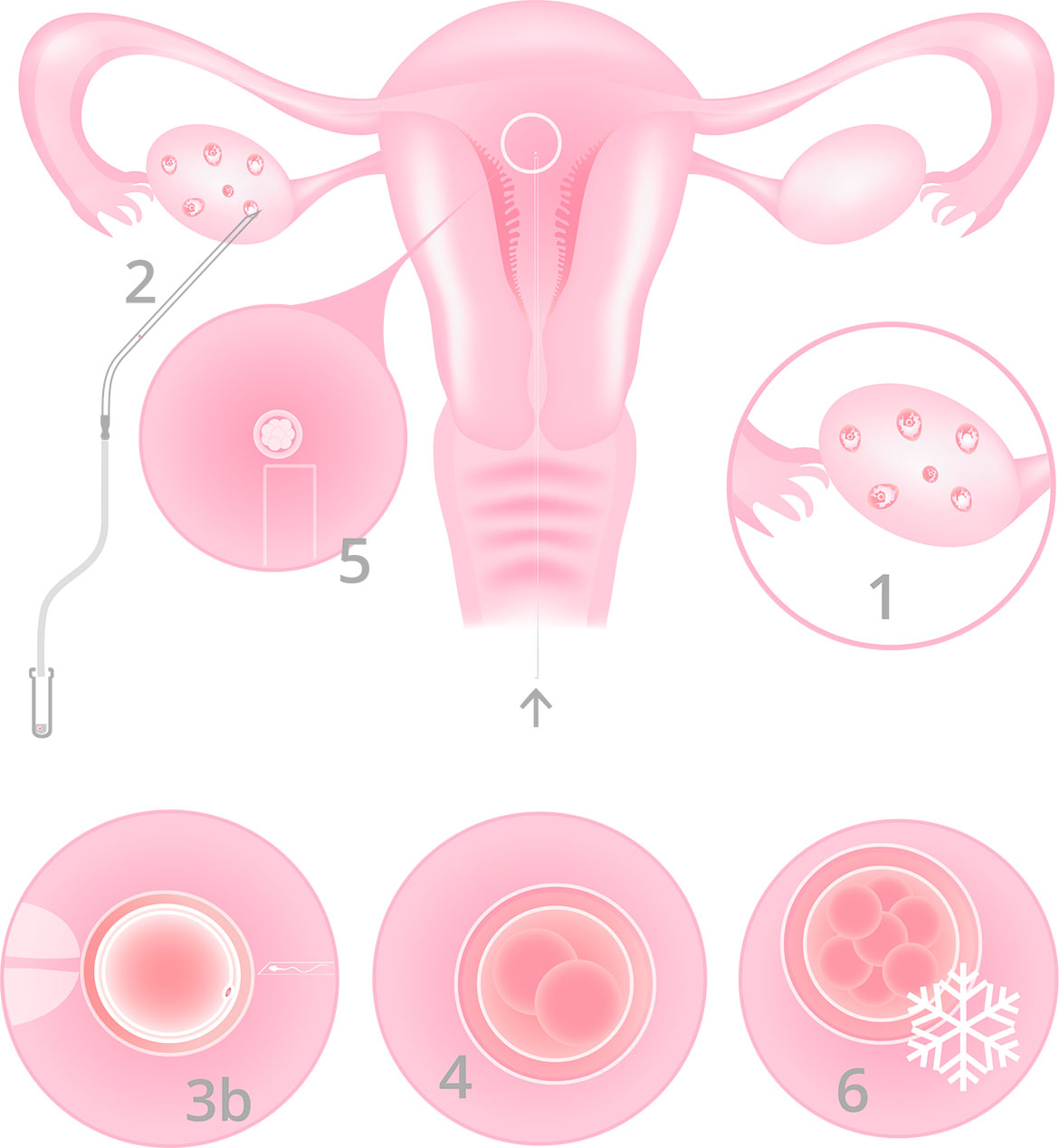




 Español
Español Français
Français Català
Català Italiano
Italiano Русский
Русский